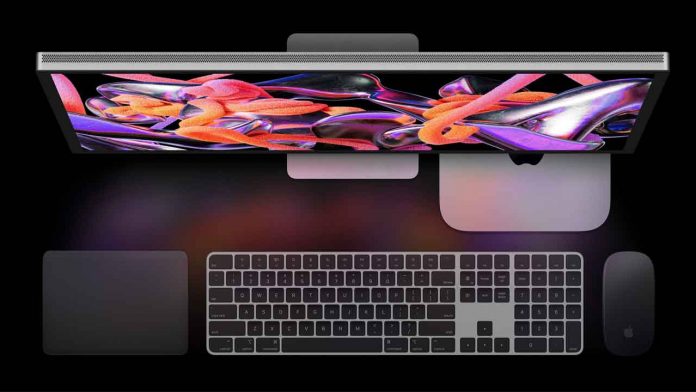Apple’s October 2024 event promises exciting updates, particularly for its Mac lineup and advancements in Apple Silicon. One of the most anticipated releases is the M4 Mac Mini, which is getting its first major redesign in over a decade.
Expected to be Apple’s smallest desktop yet, the new Mac Mini will be more compact, potentially around the size of an Apple TV, and equipped with M4 and M4 Pro chips. These new chips, based on second-generation 3-nanometer technology, promise significant performance improvements—50% faster CPU speeds and enhanced AI capabilities, such as hardware-accelerated ray tracing.
The M4 MacBook Pro is another exciting release, with rumors pointing to new 14-inch and 16-inch models featuring M4, M4 Pro, and M4 Max chips. These chips will offer powerful GPU upgrades, making the new MacBook Pro a powerhouse for professional users. Additionally, the MacBook Pro will come in a sleek new Space Black finish and feature an extra Thunderbolt port.
Apple is also making strides in AI integration. The M4 chips will feature a more advanced 16-core Neural Engine, designed to support Apple’s growing AI and machine learning initiatives, from real-time image processing to advanced speech recognition.
Beyond hardware, Apple’s commitment to privacy remains a cornerstone of its business strategy. The company emphasizes that privacy is a fundamental right, designing its devices to keep user data secure. This is reflected in features like on-device processing for personal information, limiting data sent to Apple servers, and its industry-leading encryption technologies, which safeguard data even from Apple itself. Whether it’s iPhones, MacBooks, or Apple’s cloud services, user privacy is consistently prioritized across their ecosystem.
Since the introduction of Apple Silicon in 2020, Apple has fundamentally transformed its approach to computing, from its devices’ hardware architecture to their overall performance, efficiency, and user experience. Apple’s decision to transition from Intel chips to its own ARM-based Silicon marked a significant shift in the industry, and the evolution of Apple Silicon—from the M1 to the upcoming M4 chips—has brought several key changes and advancements.
1. Performance and Efficiency Gains
The Apple Silicon chips, starting with the M1, revolutionized performance by integrating the CPU, GPU, RAM, and Neural Engine into a single system on a chip (SoC). This integration allows for faster processing, lower power consumption, and more efficient heat management, enabling devices like the MacBook Air, Mac Mini, and iMac to achieve incredible performance without needing bulky cooling systems. The M1 chip, for example, delivered up to three times faster CPU performance and up to six times faster graphics than previous Intel-based Macs.
With each generation, Apple has fine-tuned its chip architecture. The M2, introduced in 2022, further improved power efficiency and performance, particularly in graphics and AI tasks.
The upcoming M4 chips, built on advanced 3-nanometer technology, will take these improvements even further, offering a 50% performance boost over the M2 and enhanced AI processing.
2. Unified Memory Architecture (UMA)
One of the most notable changes with Apple Silicon is the Unified Memory Architecture (UMA). In traditional computers, the CPU and GPU each have separate memory pools, leading to slower data transfers between them.
Apple Silicon’s UMA allows the CPU, GPU, and Neural Engine to share a single memory pool, making data access much faster and improving the performance of memory-intensive tasks like video editing and 3D rendering. This efficiency is a key reason why even entry-level Macs can handle professional-grade workloads.
3. Neural Engine and AI Capabilities
Apple has consistently emphasized machine learning (ML) and AI as core elements of its chip design. Each generation of Apple Silicon has seen improvements in the Neural Engine, the part of the chip dedicated to AI tasks like image recognition, natural language processing, and real-time enhancements.
The M4’s 16-core Neural Engine will continue this trend, supporting advanced features like real-time video processing, on-device AI for privacy-conscious applications, and hardware-accelerated ray tracing, which boosts graphics performance, especially in gaming and AR/VR environments.
4. Improved Battery Life and Efficiency
One of the biggest advantages of Apple Silicon has been battery efficiency. By designing its own chips, Apple has been able to create systems that run far more efficiently than their Intel counterparts.
For example, the M1 MacBook Air and M1 MacBook Pro saw dramatic increases in battery life—up to 18-20 hours on a single charge. This has made Apple laptops the go-to choice for professionals who need long-lasting performance on the go.
The upcoming M4-based MacBook Pro is expected to further extend battery life while delivering even higher performance, especially for power-intensive tasks like video editing and 3D modeling.
5. Personal Privacy and Security
Apple has always positioned itself as a champion of user privacy and security, and its Apple Silicon architecture reinforces this commitment. Apple integrates Secure Enclave, a dedicated security chip within Apple Silicon, which handles sensitive data like fingerprints, Face ID data, and encryption keys.
This ensures that even if a device is compromised, personal information remains secure.
Apple has also built privacy features into its operating systems, emphasizing on-device processing for personal data whenever possible. This minimizes the amount of data sent to Apple servers, reducing the risk of exposure.
For example, features like Siri and Face ID process information directly on the device, keeping user data local and secure.
Moreover, Apple has adopted hardware-level encryption in its chips, meaning data stored on an Apple device is encrypted by default. This makes it extremely difficult for hackers or even Apple itself to access user data without permission, ensuring that privacy is at the core of Apple’s device ecosystem.
6. Next Steps for Apple Silicon
Apple’s move to its own chips has set the stage for further innovation. The M4 generation, which will debut in products like the Mac Mini and MacBook Pro in late 2024, represents the latest leap forward.
These chips are expected to bring groundbreaking improvements in AI performance, graphics rendering, and energy efficiency. Apple is also likely to expand the use of its Neural Engine across more applications, pushing the boundaries of machine learning and AI on personal devices.
Looking ahead, Apple may also integrate AI and machine learning capabilities into more specialized areas, such as augmented reality (AR), virtual reality (VR), and gaming, as evidenced by the growing presence of hardware-accelerated ray tracing in their chips.
As Apple continues to innovate with new devices and more advanced chips, it’s clear that both performance and user privacy remain at the forefront of their strategy. Expect major improvements in both user experience and security with these upcoming products.







